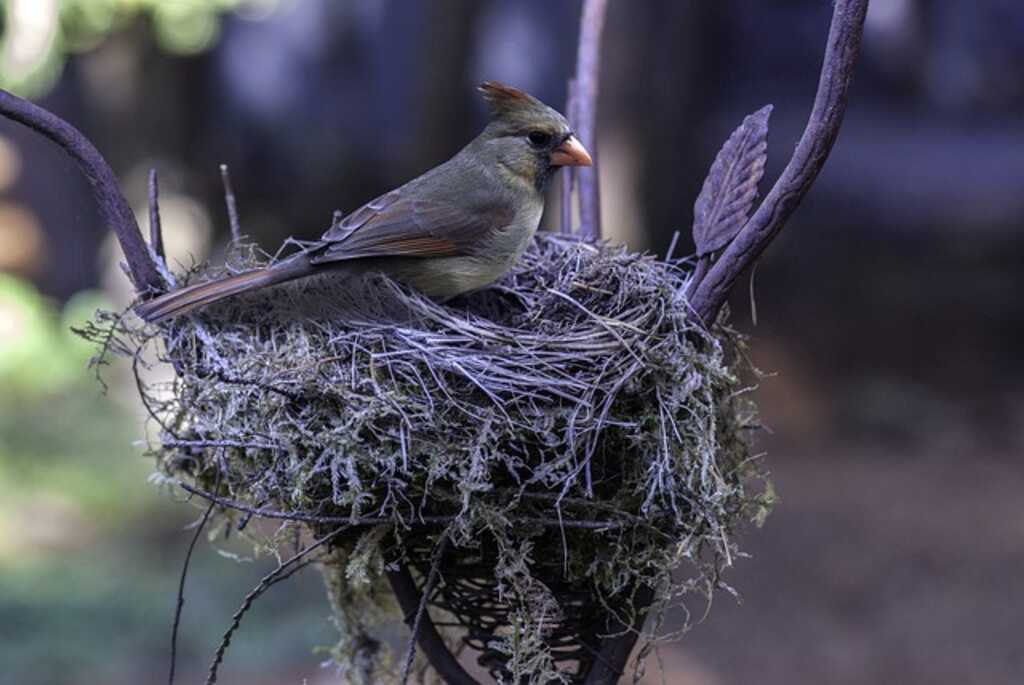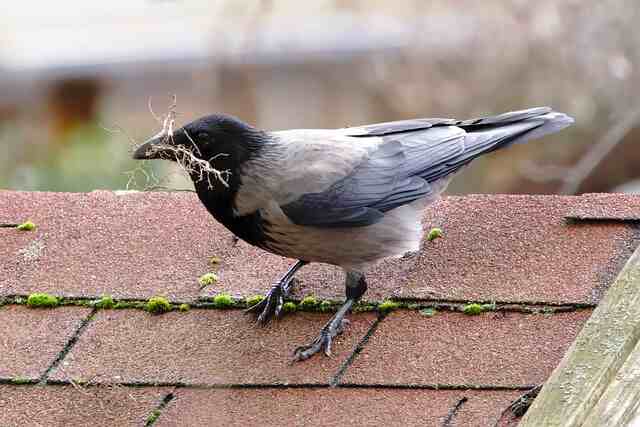Nests are vital in the life cycle of birds as they provide shelter, protection and warmth. Building a nest is no small feat, and it can take days or even weeks for a bird to construct its home.
But just how quickly can a bird build a nest? In this article, we will explore the process of nest building and the factors that influence how fast a bird can build one.
Table of Contents
- 1 How fast can a bird build a nest?
- 2 VI. Common Questions About Bird Nests
- 2.1 How Quickly Do Birds Build Nests and Lay Eggs?
- 2.2 Is There a Way to Predict Whether Birds Will Build a Nest?
- 2.3 Do Birds Build Nests at Night?
- 2.4 Do Birds Build Nests Before Mating?
- 2.5 Do birds reuse nests?
- 2.6 How fast can a Robin build a nest?
- 2.7 Does the male or female robin build the nest?
- 2.8 How does a bird start building a nest?
- 2.9 Do birds build nests just to sleep in?
- 2.10 Where do birds sleep before they build a nest?
- 2.11 VII. Final Thoughts on Bird Nest Building
- 3 Author
How fast can a bird build a nest?
The speed of construction depends on the species of bird and its nesting habits. Some birds are more adept at building nests than others. Smaller species, such as wrens, can take as little as two days to build a nest from start to finish. While larger species such as eagles may need up to three weeks or longer depending on the complexity of the nest structure.
I. Introduction to Bird Nest Building
Birds are remarkable beings with impressive nest-building talents. Their nests range from simple twig structures to complex woven ones and serve as a safe home for incubating eggs and raising offspring.
The process demands bird’s engineering skills, physical strength, and creativity, making them true artists! This blog explores various bird species and the time it takes for them to build nests, examining the factors affecting nest construction duration.
A. Understanding the Importance of Nest Building
Nest building is an essential process in the natural world. It is a critical part of many species’ lives, from birds to mammals and even insects. Understanding the importance of nest building can help us better appreciate nature, as well as help us safely interact with wildlife.
For starters, nests are key in helping animals survive and reproduce. Many species use them to protect eggs or young from predators or harsh weather conditions like cold temperatures or heavy rains. Nests also provide warmth for their inhabitants, allowing chicks to grow more quickly and successfully reach adulthood.
Some species use nests for more than just reproduction; some build elaborate structures that demonstrate their skills as builders and can make them attractive partners when looking for mates.
B. Overview of Different Bird Species and Nest Building Time
Different bird species have distinct characteristics when it comes to constructing nests. Some birds prefer to build their nests in trees while others prefer the ground or a specific area like rocky cliffs-sides. Some birds even utilize materials from their surroundings such as twigs and leaves while others use mud or clay to construct strong foundations for their homes.
The process of nest building typically takes place at least once a year during breeding season but some species may build multiple nests throughout a single season. The amount of time a bird needs to construct a nest depends on many factors such as size, materials used and desired design.
Small birds like sparrows typically build nests in just 1-2 days while larger birds such as the bald eagle can take up to 10 days or more to finish their elaborate nests.
Some common materials used in constructing nests include twigs, straws, leaves, feathers and mud; although some species have been known to incorporate unusual items such as plastic bags into their structure!
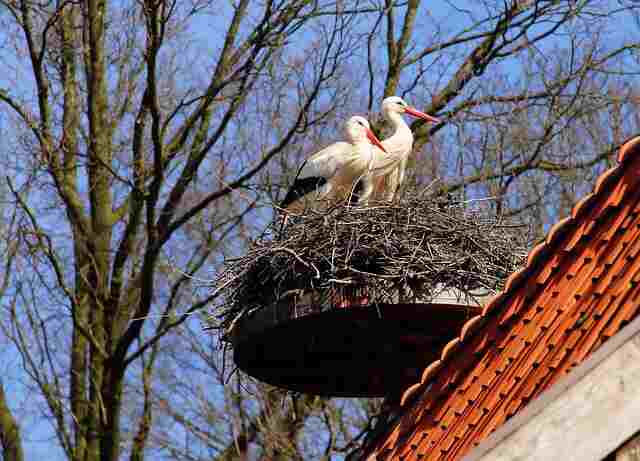
II. Factors That Affect Nest Building Time
A. The Complexity of the Nest
Building a nest is an intricate task for birds, requiring them to select the right materials and weave them together in a complex pattern. The complexity of bird’s nests can vary greatly depending on factors such as the species of bird, environment, and resources available.
The length of time it takes to build a nest also depends on these factors. The type of bird constructing the nest plays an important role in determining how long it will take them to complete their project.
Some birds have adapted over time to build more complex nests that provide better protection from predators and harsh climates, while others construct simple nests with minimal effort.
Additionally, if birds are under pressure due to predation or distracted by other tasks such as feeding their young, they may be less likely to invest time into building elaborate constructions.
B. Seasonal Changes
Nest building is an important part of the mating and reproduction process for many species of birds. However, the amount of time it takes to build a nest can vary significantly depending on certain factors.
Seasonal changes are one of the most influential factors that affect nest building times, as different types of weather conditions may necessitate different lengths of construction periods.
During the summer months, birds often have longer hours of daylight which allows them to build their nests more quickly than in winter when temperatures become colder and there are shorter hours for building.
Additionally, some species may need extra time to gather materials or search for a suitable place to construct their home during colder months due to snow or ice coverage making it difficult to access resources or find spots that provide shelter from harsh weather conditions.
C. The Purpose of Nest Building
The primary purpose for birds constructing nests is to provide protection from predators such as cats and hawks for both their eggs and chicks. Additionally, nesting provides shelter from climatic extremes such as harsh weather conditions or extreme temperatures.
Some species will even build multiple nests in order to ensure the best possible environment for their young ones, particularly if one nest fails or becomes damaged over time.
D. Nest-Building Experience
The art of building a nest is an important and complicated skill that birds must acquire in order to have successful breeding seasons. Although the exact time it takes for a bird to build a nest may vary, experience is also thought to play an important role in how quickly they are able construct these structures.
Experts agree that experienced birds tend to be more efficient when it comes to building their nests. This may be because they already possess the knowledge about what materials work best for their particular environment, as well as being familiar with where and how to source those materials from.
Additionally, with practice comes familiarity; experienced birds have likely built multiple nests before, so they are more comfortable with the process and can do it quicker than if it was their first attempt. In contrast, inexperienced birds are often slower at constructing their nests due to lack of experience.
III. Nest Building Comparisons
A. Building a New Nest vs. Restoring an Old One
The process of building a new nest can be long and difficult for birds. But for those who choose to restore an old nest instead, the task is much easier. Restoring an old nest takes less time because much of the structure is already established from previous seasons.
This allows birds to simply add additional materials such as feathers, twigs, and leaves without having to build it from scratch. Restoration of old nests has many advantages for birds that include both a decrease in energy expenditure and improved nesting success rates.
By using existing structures, birds are able to conserve their own energy that would have otherwise been used to construct a brand new nest from the ground up. Additionally, restored nests tend to be larger than newly constructed ones which increases nesting success by providing more room for eggs and chicks.
B. Do Both Males and Females Build Nests?
Nest building is an important part of a bird’s life, but the roles of males and females in nest construction may vary widely. In some species, both male and female birds will take part in constructing the nest, while in others only the female builds the nest. In some species, males will provide materials for the nest without taking part in its actual construction.
The type of bird species determines who builds the nest: some monogamous species such as woodpeckers or flycatchers typically have both male and female birds taking part in building nests together; meanwhile, other polygamous birds like ducks or geese generally see only one parent – usually just the female – build a nesting site for their chicks.
IV. Types of Nests Built by Different Bird Species
A. Basic Nests
Basic nests are one type that are commonly seen built by many bird species; they are simple structures made of natural materials such as twigs and leaves, with no extra features added. The purpose of these basic nests is to provide an area for egg laying and protection from the elements for both eggs and nesting adults.
The lack of additional features makes them easier for predators to find, so both male and female birds take turns taking shifts to guard the nest from potential threats. Despite this added risk, basic nests still remain popular among birds due to their quick construction time as well as ease in finding suitable building materials in the wild.
The time it takes to build a basic nest can be influenced by various variables, such as the species of birds, environmental circumstances, and the availability of material–some birds can build a basic nest within a few days, while others may take several weeks.
B. Tiny Nests
Tiny nests sometimes have the shape of a small cup and are less than three inches in diameter. Owing to the small size of these nests, they provide a high degree of safety, warmth and protection against predators and the elements, which are vital in order for the eggs and young to survive. Tiny nests are often built within small crevices or on thin branches and may be difficult to see, taking approximately 4-5 days to set up.
C. Floating Nests
Floating nests, also known as a “raft nest”, are an interesting feature of some bird species that live near water. Ducks and herons are two of the many birds that build these types of nests.
They are unique in that they float on the surface of water and provide a safe place for birds to lay their eggs and raise their chicks. These floating islands, or rafts, are constructed from plant material such as leaves, twigs, reeds and grasses.
The materials used vary depending on the environment in which they live; however all floating nests contain enough buoyancy to keep them afloat even when weighed down by a full clutch of eggs or young chicks.
Additionally, they usually have several layers to ensure maximum protection from predators and severe weather events such as flooding or storms.
D. Subterranean Nests
Subterranean nests are the unique dwellings of many species of birds. Burrowing owls, bank swallows, and other bird species rely on these underground homes for protection from predators and harsh weather conditions. These nests can be made from mud or grasses and require a great deal of effort to construct.
Birds must build these nests in order to provide shelter for their young. Bank swallow pairs will often work together to dig out multiple chambers within a single burrow which is then lined with feathers, fur, leaves, and grasses for insulation. The entire process can take up to four days depending on the size of the nest and materials used in its construction.
Burrowing owls also take advantage of subterranean nesting sites but instead use scraped out cavities underneath tree roots or abandoned small mammal burrows as their shelter. For these owls, the process of digging a subterranean home can take a few days to a week.
E. Intricate Nests
Species such as orioles, bowerbirds, and weavers spend weeks to months building elaborate nests with materials found in their habitats. Orioles create thin but sturdy woven cups of grass stems and fibrous plants lined with soft feathers for insulation.
Bowerbirds build a structure out of twigs and leaves using a variety of materials like moss, lichen, shells, stones, feathers and even discarded human objects like bottle caps or pieces of metal.
Finally, weaver birds construct their nests from long grasses suspended on thin branches by spider webs they produce themselves! Each of these animals’ nests are made differently but all result in a secure home for the species to live in.
As well as providing shelter, these intricately built nests also serve as attractive nesting sites for potential mates during breeding season.
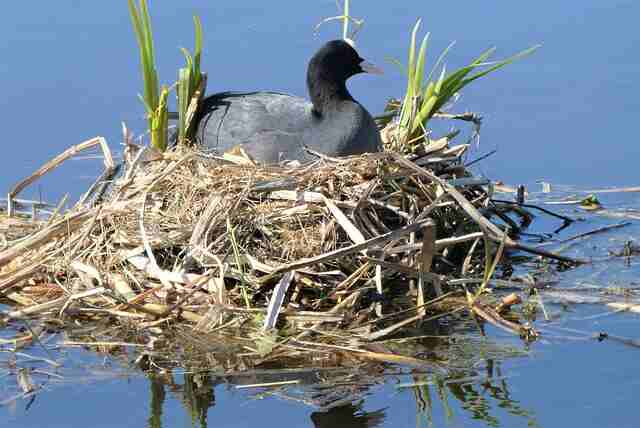
V. Birds Without Nesting Grounds
A. Birds That Don’t Build Nests
When it comes to birds, the image of a nest is often what comes to mind. But not all birds build nests; in fact, some species have entirely different ways of providing shelter and protection for their eggs and young. Kingfishers, cuckoo shrikes, certain species of parrots and pigeons are among some of the birds that don’t build nests.
Kingfishers make their homes in burrows or tunnels dug into river banks. Cuckoo shrikes use tree cavities or rock crevices as nesting sites. Parrots also like to make their home in tree cavities and hollows in trunks or branches. Meanwhile, pigeons lay their eggs on flat platforms made from twigs or grasses on buildings’ ledges or even window sills!
B. Nest-Stealing Birds
Most people are familiar with the term “brood parasite.” These birds use the nests of other species to lay their own eggs, leaving their young to be raised by unsuspecting hosts. But there are many other birds that also steal or build upon existing nests without being classified as brood parasites.
Blue Jays, Black-capped Chickadees, and Northern Mockingbirds are just a few examples of birds that steal nests without being considered brood parasites. While they may take over an existing nest in order to raise their young, these species do not leave their eggs in another bird’s nest for others to rear.
Instead, they will often add more materials and make adjustments to the original structure themselves before using it as a home for their offspring.
C. Brood Parasites
Birds that steal nests from other birds, known as brood parasites, can be found in nearly every part of the world. These parasites, which include cuckoos, cowbirds and honeyguides, are unique for their unusual nesting habits. Rather than constructing their own nests to incubate eggs and raise young, these species instead lay their eggs in the nests of other birds.
In this way they effectively “steal” the time and resources that another bird would have otherwise devoted to incubating its own eggs and nurturing its own offspring. By securing a safe home for their eggs without expending any energy or effort, brood parasites ensure that their young will hatch first and be given priority access to food resources.
This gives them a major advantage over other species as they don’t need to compete for resources or defend territories during the breeding season.

VI. Common Questions About Bird Nests
How Quickly Do Birds Build Nests and Lay Eggs?
The process of nest building can take anywhere from three days up to two weeks, depending on the species of bird. Once the nest is complete, an egg will typically be laid within one to two days after construction. The type of materials used in the nest can vary from grasses, mud, twigs, leaves or feathers.
Some species line their beds with fur or even hair! Birds may also make multiple trips during the day collecting items that they need to construct the perfect home for their eggs.
In addition to gathering materials, most birds will use saliva as a bonding agent when constructing a nest. This helps ensure that it’s structurally sound and able to protect its occupants from predators or harsh weather conditions.
Is There a Way to Predict Whether Birds Will Build a Nest?
Common signs of birds preparing to build a nest include collecting nesting material, constructing the nest, and laying eggs. Nesting material like twigs and grasses may be gathered from nearby sources such as trees or shrubs.
This is usually done gradually over several days. You may also notice the birds spending more time in one particular area and starting to construct the actual base of their future home with collected materials.
Lastly, once the construction is finished, birds will lay eggs inside their new home which signals that they’re ready to begin raising young ones.
Do Birds Build Nests at Night?
While the majority of bird species prefer to build their homes during the day, some nocturnal birds have adapted to create their nests under the cover of darkness. Nest-building activities are typically used as a way for birds to protect themselves and their young from potential predators.
Therefore, it is beneficial for birds that live in areas with high levels of predator activity to take advantage of the lack of visibility that night provides. By constructing nests during this time, they can reduce the risk of being spotted by a predator looking for an easy meal.
Nocturnal species such as owls or nightjars favor building their homes at night due to factors such as reduced competition from other nesting species and fewer disturbances from daytime animals.
Do Birds Build Nests Before Mating?
It appears that, yes, birds do typically build a nest or prepare a nesting site before they mate and lay eggs. The exact timing varies from species to species, but generally speaking it takes place after courtship rituals have been completed and pair bonds have formed between potential mates.
During this time, both members of the pair will work together to construct a secure structure which will serve as home for them during their breeding season.
Different materials may be used depending on the environment in which they live; twigs, grasses, feathers and even mud can all be used to form a sturdy nest capable of protecting eggs until they hatch.
Do birds reuse nests?
For many species, birds will return to their nest at certain times of the year and may even use it for multiple years in a row. This behavior is called “site fidelity” This is especially true when the nest is located in a safe area and offers enough protection from predators or inclement weather.
For other species, they may prefer to make new nests each season or even build several nests at once with the intention of using some but not all. Birds such as woodpeckers may also create cavities in trees which they could potentially use again, although this depends on availability and preference.
How fast can a Robin build a nest?
Robins are known for their speed when building nests, often completing the entire process within 3 days. They start by selecting a suitable spot, usually located close to trees or bushes for shelter and protection from predators.
Once the spot is chosen, the birds will then begin weaving together twigs and grasses while also lining the interior with softer materials such as feathers and fur.
Some robins even add decorative items like snail shells or colorful pieces of string inside their nests! All this work requires very little time – typically only around 2-3 hours per day – but comes together quickly over the course of a few days.
Does the male or female robin build the nest?
The female robin builds the nest. She begins by finding suitable nesting material and then shapes it into a cup-like structure. Once her work is done, she lines the interior of the nest with soft materials like grass and feathers to make it cozy for her eggs.
The male robin helps out by bringing his mate additional nesting materials and helping guard her while she works on constructing her home.
He also takes over incubation duties while she leaves to find food; however, he contributes very little in terms of building or designing the actual structure of the nest itself. In fact, most scientists believe that males only help build nests as part of mating rituals with their mates.
How does a bird start building a nest?
Building a nest is a complex and important task in the life of a bird. Starting a nest is an essential part of the breeding process for many species, and there are several distinct steps involved in nest building. First, a bird will find an ideal location to build its nest.
It will consider factors such as protection from predators, access to food sources and proximity to potential mates. After selecting the perfect spot, it begins gathering materials that can be used for construction. This may include twigs, leaves, grasses and other vegetation.
The bird then starts piecing together different pieces of material until it has formed a structure that provides adequate security for its eggs or young chicks. Depending on the type of bird, this process can take anywhere from days to weeks to complete!
Do birds build nests just to sleep in?
Nests serve many more purposes than just providing a sleeping area; they also offer birds an ideal place to rest during inclement weather or when predators pose a threat. Nests also provide insulation from temperature extremes and can be outfitted with various types of lining for further comfort.
Where do birds sleep before they build a nest?
Birds that are starting to breed typically find safe areas to roost such as dense vegetation or cavities in trees. Many small perching birds can often be seen sleeping on branches of trees close together while larger waterfowl like geese and ducks tend to congregate in flocks and rest on open waters or land close by. Raptors such as hawks and eagles are also known to roost on treetops near their nesting sites before beginning construction.
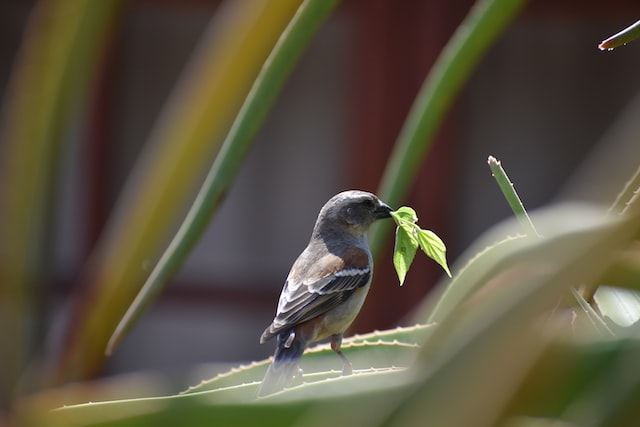
VII. Final Thoughts on Bird Nest Building
A. Importance of Protecting Bird Nests
In conclusion, it is clear the importance of protecting bird nests. Without this protection, it would be difficult for many species of birds to thrive and survive. We must take steps to help protect these important habitats by creating more natural reserves and promoting sustainable land use practices.
Additionally, we must take responsibility for our own actions – reducing our plastic waste, picking up litter in our communities, and avoiding the use of pesticides whenever possible.
Related Post: Importance of Bird Conservation: The Vital Role of Birds!

